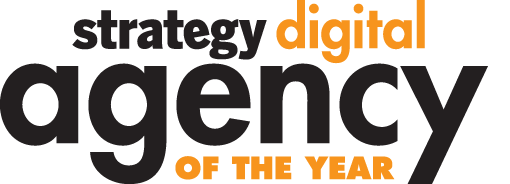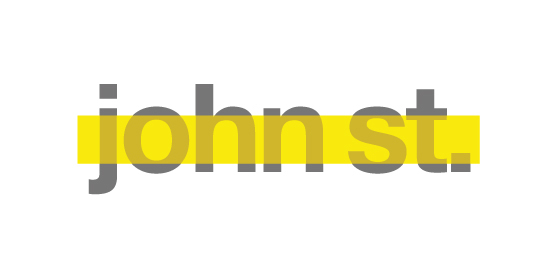John St.'s digital school of thought
JOHN ST. CREATED A BIT OF A STIR EARLIER THIS YEAR when it announced it had been purchased by holding company WPP. Some industry spectators were concerned that the conglomerate would ultimately impact the work coming out of the agency. But Arthur Fleischmann, president at John St., says being part of the multinational hasn't led to any major changes that would impede the agency's mandate to make its clients' brands "unignorable." He and the partners are still in it for the long-run, and have no plans to retire anytime soon.
"It's business as usual, just on steroids in a few cases," Fleischmann says.
What has changed since being bought out, he says, is that the agency's CFO has a new financial reporting system to navigate, as well as access to a pool of new resources (including media, direct marketing and PR) to offer clients support outside of Canada, such as for Kobo's global campaign "Gift of Reading," which also ran in the U.S., New Zealand and Australia.
In addition to being named the top agency in Canada, John St. also takes home Bronze in strategy's Digital Agency of the Year competition. Four of the six cases submitted across both competitions were digitally-driven, many of which brought forward new tools and techniques, such as an interactive website for people to empathize with autism in "Carly’s Café."
Angus Tucker, partner and co-ECD at John St., notes that the shop's creatives are able to fathom solutions to technical problems that many of its digitally-led projects demand as a result of hiring hybrid creatives to mentor others about all things digital, and facilitating training courses in programming and coding to develop their skillset.
"We have some specialists who really understand technology and technical production," Fleischmann says. "But we want everyone to be able to sit at the table [with the client] and say 'I can get you about 90% of the way through the conversation. That last 10%, I'll need to bring in Mavis [Huntley, our head of integrated production] because I don't quite understand all of the coding."
The agency also sends teams to SXSW and Cannes to gather intel on new tech and trends and then present their findings in the agency's basement upon their return. More recently, they introduced "Partner Days" - a mini two-day conference within the agency walls where partner production companies, from pure-play digital shops to app developers, come in to speak about new capabilities, measurements and technology.
"[Partner Days are] meant to inspire the entire company, and expose them to new thinking," Fleischmann says. "It can help them discover how to solve a current client problem by using some new tool that was shown in one of the presentations."
One of the talks even sparked a new business venture for John St. The agency co-developed a proprietary measurement tool, called Livemetric, with partner Source Metrics after the company came in to present its social marketing measurement software. The agency is now using the shared-revenue tool, which is currently in beta-testing, to measure fully-integrated communications plans for its own clients, such as Mitsubishi. The finished product will be rolled out in early 2014, says Fleischmann, and several clients such as Maple Leaf Foods, ING Direct and Winners are also considering implementing it.
He muses that while the agency becomes more educated and refines its technical knowledge, so do clients. "We used to have to explain every element [of a campaign]. For example, if we wanted to do social gaming, we would need to explain it and wireframe every piece of the strategy with examples. Now they're speaking in shorthand, which is making it easier for us to sell bigger and better work to our clients."
Tucker also describes a change in clients' attitudes, with them setting new expectations of the work with amusing RFPs and briefs. When Future Shop decided to hire John St. in March of this year, instead of meeting in its office, the brand asked agency execs to participate in a "final RFP interview" via Skype from its Toronto flagship store, and then surprised them by asking if John St. would join its team.
And during a Maple Leaf Foods briefing at the agency's office in the summer, the client presented an article that reported a small town Louisiana wife and mom had used bacon bits as a negotiation tool to have her family do chores around the house. "It was funny, insightful, and complete bullshit. They made it up. Even going to the stage of mocking up the article they 'found' on the internet," Tucker wrote on the agency's blog after the brief took place.
John St. later borrowed the bacon bartering idea for a series of online spots for Maple Leaf Foods that launched in July of this year. The spots were such a success (raking in over 2.3 million views across four videos in only a couple of months) that the brand is now airing them on TV.
Tucker says that the brand's white lie helped bring the brief to promote the "power of bacon" to life, but more significantly, it demonstrated the kind of enthusiasm that John St.'s clients have been exerting lately. "It sets an expectation of the work. They want it to be surprising, smart, funny and unexpected," Tucker says, adding that he’s noticed an increased "appetite for creativity and risk-taking" from clients, which is enabling John St. to push for more experiential, social and digital-based projects that don't always guarantee massive ROI.
Sending a cancer survivor to hitchhike his way across Canada in the middle of winter for Stanfield's, building model cars and travel bags entirely out of coffee cups for ING Direct's "You get what you save for" campaign and hiding giant shoes, purses and jackets for consumers to find in exchange for prizes from Winners are the types of amusing and interactive projects clients are asking for today, Tucker says.
"There are no hard numbers behind [fun experiential executions] that says we're going to get this many shares or earned media, but it's different," he adds. "The arguments we used to have with clients was [them saying that] entertainment wasn't necessary to get people to listen to what they have to say. We're not having those conversations anymore. They now say, 'We get it, that's why we want to work with you'."

